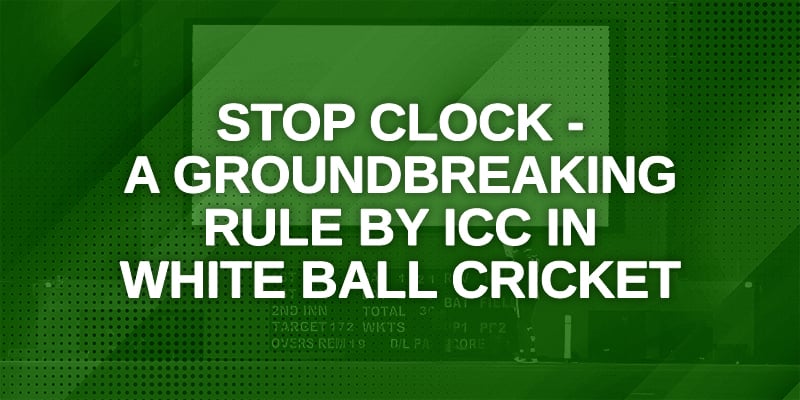In the last decade, international cricket has witnessed multiple changes in terms of rules and regulations. Cricket, as a sport, is still a growing entity and ICC’s main focus is to penetrate the sports in the USA and European countries.
These two continents right now have a higher viewership for football and tactile with the world’s biggest sport, ICC introduced T20 cricket – the shortest format of the game. We have seen the effect of the invention of the T20 cricket and its impact on the visibility of the sport.
In a recent announcement, ICC introduced Stop Clock – a new rule that is set to come into effect during the upcoming T20 World Cup.
The global media is divided in terms of how it is going to affect international cricket and the upcoming T20 World Cup. ICC has done its research before making the rule a mandate.
They already introduced the rule once in December 2023 in the ODI fixtures and according to the Chief Executives’ Committee, 20 minutes were saved per ODI.
In this article, we bring you a detailed analysis of ICC’s new rule. its benefits, and how it is going to affect international cricket overall.
Stop Clock – Implementation
The Stop Clock rule is introduced by ICC only in white-ball cricket and hence it will come into effect from the T20 World Cup. It has a long list of do’s and don’ts for both teams who are part of the fixture.
Here is a simplification of the rule for a better understanding of the cricket fans.
- The Stop Clock Rule says that the fielding side should start the next over within 60 seconds of the completion of the previous over.
- For transparency, the count of 60 seconds will be displayed on a digital clock on the ground and it will be in the hands of the third umpire to decide when to start the clock.
- A five-run penalty is decided by the ICC if the fielding side fails to follow the rule for the third time. For the first two times, a warning will be issued by the field umpire.
In the same rule, ICC has also introduced some exceptions considering the different situations during the game.
- The rule is not applicable if a new batter is arriving on the pitch between the overs.
- No stop clock during official drink interval
- The umpires will decide to use the stop-clock if there is an on-field injury treatment.
- The time lost is for any circumstances beyond the control of the fielding side
Stop Clock – Advantages
- The rule will affect the pace of a fixture. The fans will be more engaged and won’t feel disconnected during the change of an over.
- Less time will be wasted in making decisions and actual cricket will be played on the field.
- The stop clock applies to both teams, ensuring a level playing field.
Stop Clock – Disadvantages
- The captain of the fielding side will be always under pressure to make quick decisions and that can lead to a huge blunder.
- A 60-second window can lead a to wrong decision regarding fielding placements and bowling changes.
- The control of the match will shift from a captain to the umpires – eventually, they will decide when to start the clock and when to exempt.
- The batting side could try to exploit the rule by strategically taking longer than necessary at the crease to eat into the fielding team's time.
- The rule doesn't fully account for unexpected events like player injuries or equipment malfunctions that could cause genuine delays.









